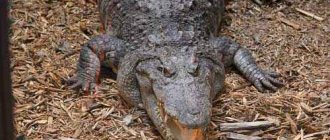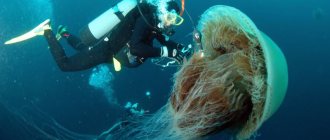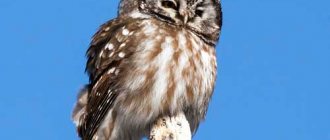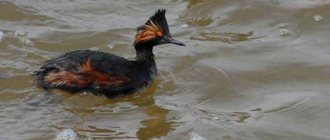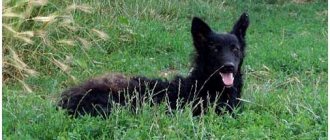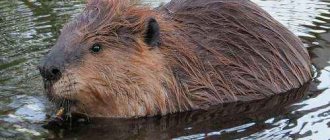Residents of Bashkiria are concerned about the invasion of poisonous spiders - yellow heyracantiums or, as they are also called, yellow spiders. Near Ufa, after being bitten by such a spider, two men sought medical help, as reported by the news agency Bashinform. They were taken to the infectious diseases hospital, where they were given IVs and injections. Two similar cases occurred last year in the Ufa suburb of Nagaevo. One of the local residents' blood pressure rose after being bitten by a yellow sakura, and the man almost lost consciousness.
Question answer
Where did karakurt spiders come from in the Moscow region and why are they dangerous?
In the summer of 2022, yellow poisonous spiders appeared in the Rostov region. Residents of the Tatsinsky district discovered them in the courtyards of private houses and posted photos on social networks to warn their neighbors. And in 2014, the Oryol media wrote about the fact that yellow sak was discovered in the region. A resident of the region was bitten by a spider on the lip and hand; as a result, the woman went to the infectious diseases hospital, complaining of an unbearable burning sensation and acute paralyzing pain.
Yellow sac spider
It is found in the Rostov and Volgograd regions, and was recently discovered in Bashkortostan. The spider, no more than 1.5 cm in length, has an aggressive disposition and can easily bite. A person who is unlucky enough to meet him will feel a sharp, stabbing pain at the site of the bite. The venom of the yellow sac spider is not so toxic as to cause serious harm to health, but unpleasant sensations are guaranteed to the bitten person.
How dangerous is a yellowjacket bite?
As Rosselkhoznadzor warns for the Oryol and Kursk regions, the venom of this spider poses a clinical danger to humans. The bite can cause severe pain and lead to a necrotic ulcer. The department advises those who accidentally find themselves near the spider to exercise extreme caution and avoid its nests.
Experts say that the spider itself will not attack without a reason; it can bite only if it senses a danger to life. When meeting a predator or a person, a yellow sak may have a defensive reaction, and it is able to use its powerful jaws, Mikhail Krivosheev, director of the Zoological Museum of Bashkir State University, explained to the Bashinform agency. Arachnologist Alexander Gladkikh told the publication that people with allergies should especially be wary of the poisonous spider. In case of a bite, the expert advises to disinfect the wound, take an antiallergic drug and consult a doctor. If yellow sak is found in the house, you should not take it with your bare hands, but you can cover it with a jar on top, put a leaf underneath and take it away from the house.
Cross
About 30 species of cross spiders have taken root in Russia. They climbed into forests, gardens and parks, some of them found refuge in abandoned buildings. These 4cm long spiders have a hard-working nature, as every couple of days they dismantle their old web and create a new one in its place. They are not dangerous to humans, but in rare cases their bite can cause a burning sensation in the wound area and short-term discomfort.
Duration and lifestyle
The lifespan of these amazing creatures is short. On average, cross spiders live about a year , but some individuals can live longer - up to two years . The Crusaders lead a hermit lifestyle. In their natural habitat, these spiders have many enemies. They have to fear not only various birds, frogs and bats, but also parasitic flies that lay eggs directly into the spider’s body. Therefore, they are most active at night, when most of his opponents are asleep.
At night they weave nets to get food for themselves. Male crosses do this only in the initial period of their lives, and with the onset of puberty they look for a female to prolong the race. This explains the significant difference in size between female and male cross spiders. A very entertaining way for these tiny creatures to overcome long distances. When competition arises in the territory where the crusader lives due to the accumulation of a large number of relatives, the spider flies with the wind to another place on its web. According to scientists, spiders can travel up to 400 kilometers in this way.
Silver spider
The only underwater arachnid inhabitant of Russia is widely distributed in the Caucasus, Siberia and the Far East. He almost never goes on land, and only emerges to take in another portion of air and take it to his cocoon home. This small spider, only 1.5 cm long, can bite, but only if provoked. At the same time, it will release a little poison, and in this case nothing threatens a person. At most, the wound from the bite will hurt for several days.
Social structure and reproduction
Photo: Big yellow spider
These spiders live exclusively alone and try to settle away from each other. If they find themselves nearby, they usually disperse, and sometimes a conflict may arise between them - if one of the spiders is larger (usually this happens when a female and a male meet), then he simply tries to catch and eat the smaller one.
The mating season occurs in the spring - yellow spiders become active when the sun begins to warm up more strongly, that is, in March-April in the subtropics, by the beginning of May in the temperate climate zone. Then the males begin to look for females.
They do this very carefully - the female is much larger and can simply eat the male even before mating. Therefore, if he notices any sign of aggression, he immediately runs away. But if the female calmly lets him in, it means she is ready to mate - in this case, the male inserts the pedipalps into her genital opening.
After mating is completed, he should also run away as quickly as possible, since he risks being eaten again - he has fulfilled his function and again turns into nothing more than prey for the female. She spins a cocoon to lay eggs in and attaches it to leaves or flowers using a web - this is the only way yellow spiders use it.
Laying occurs in June-July, after which another 3-4 weeks pass before the spiderlings appear. All this time, the spider remains nearby and protects the eggs from any attacks. Small spiders molt for the first time while they are still in the egg, and after emergence they undergo another one or two molts.
When it starts to get colder, they burrow into the leaf litter and hibernate until the following spring. But even then they will wake up as not yet adult spiders - the yellow spider reaches sexual maturity only after the second wintering.
Argiope Brünnich
The striped color of these spiders resembles that of a wasp, but only females have this appearance. The spider wasp lives in many southern regions of Russia, gradually expanding into more northern latitudes. The female's body length is about 1.5 cm, but this is enough for her to inflict rather painful bites. The venom of Agryope Brünnich is not dangerous to humans; swelling and itching at the site of the bite go away very quickly.
Keeping a wasp spider at home
It is better to keep Argiope bruennichus in a special terrarium, measuring at least 20x30 centimeters and more than 20 centimeters in height. The lid of such housing should be mesh so that the predator has something to breathe.
The filling substrate can be ordinary soil or a special coconut filler for arachnids. To create a comfortable spider home, you can place dry grape branches inside the terrarium so that the spider can safely weave web traps.
The wasp spider needs to be provided with room temperature and modest humidity, as too much can even kill it. The predator is fed at least 2 times a day, preferably in the morning or in the evening. As food for your “pet,” it is better to choose special food from any pet store; it is better to avoid ordinary insects.
In the terrarium you need to place a small container with water; it can serve as a regular cap from a plastic bottle. The top filler needs to be changed weekly, as the representative of arthropods loves cleanliness.
Let's celebrate! Agryope is a very beautiful and colorful representative of arthropods, which can be found in any bush or grass. You need to behave extremely carefully with a predator, without giving the arachnid any reason to bite - it is better to stay away from the arthropod, without interfering with it living peacefully and weaving a web.
South Russian tarantula
Mizgir, as this spider is called differently, lives in Siberia and southern Russia. This is a small spider, its body length does not exceed 3 cm. For hunting and a comfortable life, it settles in a hole at a depth of 40 cm and lines the entrance to it with cobwebs. He is not hostile to people and rarely bites. But if he does this, he will definitely inject poison. The bite of the South Russian tarantula is very painful, often there is extensive swelling in the affected area, and the skin may turn yellow. But it does not lead to death.
Photo and description of appearance
The predatory sak spider is small in size. The body of an adult is only 10 mm. The limb span is 25 mm. Females are several times larger than males. The body consists of the abdomen and cephalothorax. Covered with a dense shell. 4 pairs of legs, forelimbs help to grab the prey and hold it during feeding.
The abdomen is bright yellow. Slightly darker than the paw. The cephalothorax is massive, red-brown in color. Powerful jaws, pointed and rounded at the end, catch the eye. With this piercing weapon, the predator breaks the shell, the chitinous cover of the victim, and then injects poison.
On a note!
There are 8 eyes on the head, which are clustered together, but the spider’s vision is poor. The organs of smell and touch located on the limbs help to navigate the environment. The golden sak spider senses the approach of a victim or enemy by vibrations in the air, web, and smell.
The male has a yellow-brown coat, not as bright as that of the females. The size of the spider, including its limbs, barely reaches 15 mm. The main mission is to fertilize the female. After which the arthropod dies.
A photo of the saka spider is located below. You can examine the features of the body structure, color, and powerful jaws of the predator.
Yellow spider sak
Steatoda
Several species of these spiders have settled in the south of Russia, in the Caucasus and the Black Sea region. They often live in close proximity to humans, setting their traps in gardens, vegetable gardens, garages and other human buildings. They are similar in size, color and shape to the famous black widows, for which they are also called false widows. However, they are much inferior to them in toxicity. A steatoda bite, as a rule, does not lead to death, with the exception of people who are allergic to certain components of the poison. In most cases, people experience burning pain, increased body temperature, and blisters and redness at the site of the bite. Feeling unwell may last for several days.
Benefit
The poisonous spider is recognized as an active destroyer of agricultural pests. During the season, one small female eats more than 2 thousand caterpillars, adult moths, and aphids. Nobody specially lets yellow sakas into the territory, but if they appear, they are in no hurry to use insecticides. Spiders cause little harm to humans; people suffer through negligence. But the benefits for the environment are enormous. Predators regulate the number of harmful insects that eat plants, crops, and trees.
Black Eresus
The beautiful ladybug spider inhabits vast territories of Russia, found from the Rostov region to the Novosibirsk region. Having chosen a burrow once, black eresus rarely leave it. The instinct of reproduction pushes sexually mature males to take such a step, and caring mothers crawl out to warm the cocoons with future spiderlings in the sun. Eresus can bite only in case of self-defense. The consequences will be extremely unpleasant, but not fatal. At the moment of the bite, the person experiences severe pain, then numbness. You may experience sensitivity to pressure for a short period of time.
Second place - Mizgir
Mizgir spider
Mizgir is a southern Russian tarantula, which is distinguished by its large size and love for a nocturnal lifestyle. Its bite is not capable of killing a person, but it still injects poison. The pain will continue for a long time after the bite, and in addition, severe swelling may appear. An allergic reaction often occurs to injected substances, which also hides danger. But more serious side effects are rare.
